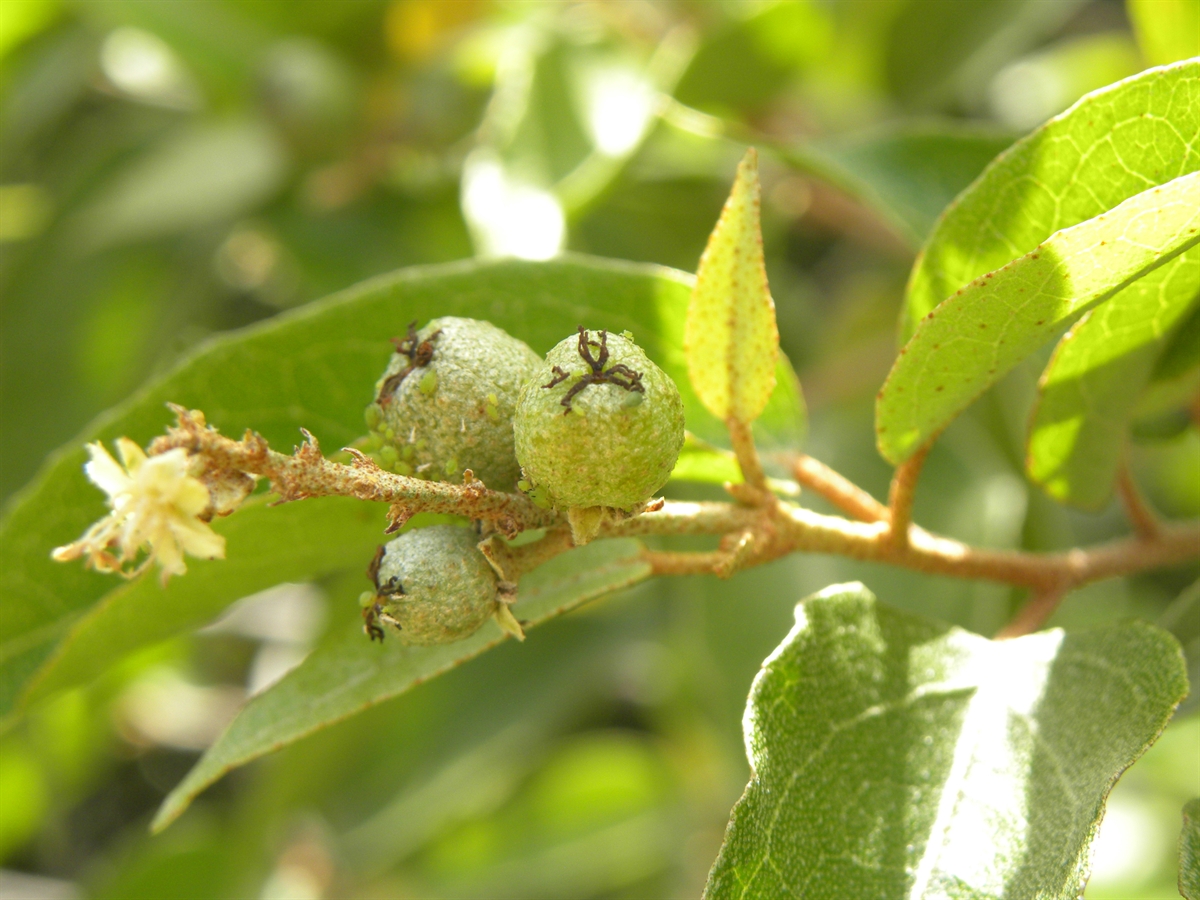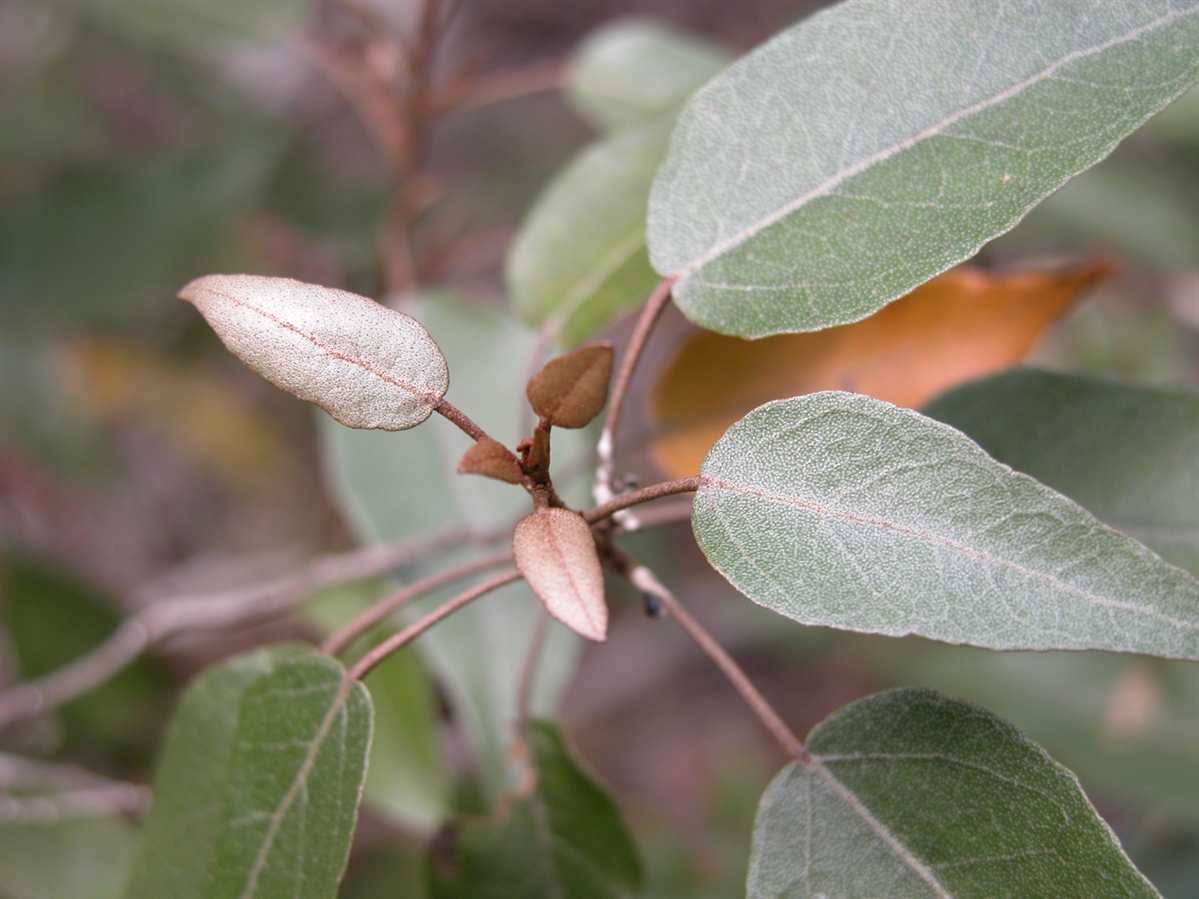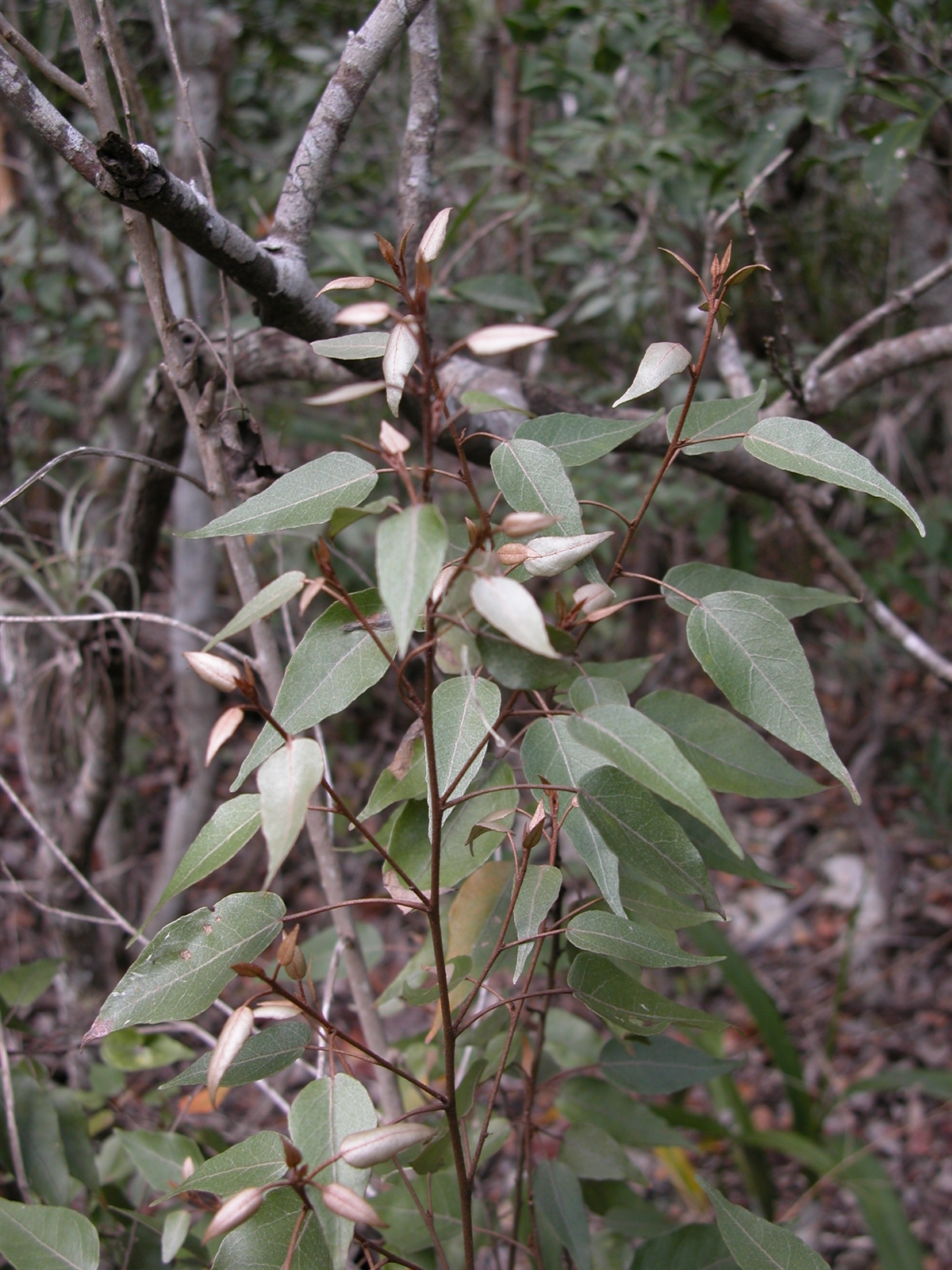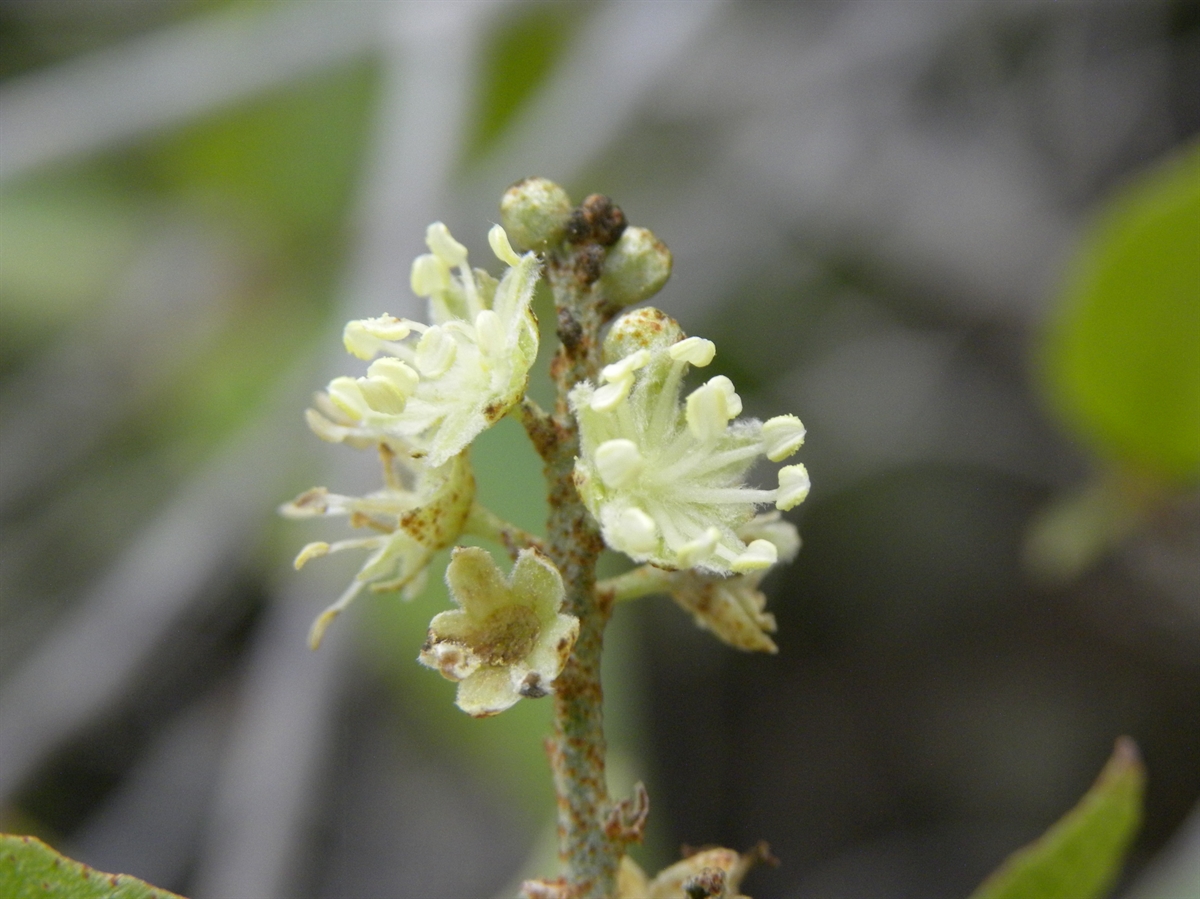Habit: Croton eluteria grows as a shrub to small tree up to four meters in height. The young stems are covered with brown lepidote scales. The leaves are arranged alternately, have an ovate shape and are up to eight centimeters in length. The leaves are covered with silvery brown lepidote scales on the lower side as well as pellucid punctate glands.
Croton eluteria is dioecious, The incomplete, imperfect, actinomorphic flowers are arranged in axillary or terminal racemes. Staminate flowers have 5 unfused sepals in the calyx, 5 unfused petals in the corolla, 8 to 12 stamens and no carpel. Carpellate flowers have 5 unfused sepals in the calyx, 5 unfused white petals in the corolla and no stamens. The fruit is a 3-parted capsule.
Habitat: Croton eluteria grows on a limestone substrate in Dry Broadleaf Evergreen Formations – Forests and Shrublands (coppice).
Distribution: Croton eluteria occurs throughout the islands of the Lucayan Archipelago, the Caribbean region, Mexico and South America. It has been transported to Nigeria where it is cultivated for bark production.
Medicinal/Cultural/Economic usage: Croton eluteria is used medicinally to treat issues of appetite, coughs, diarrhea, flu, indigestion, stomach pain, and to prevent vomiting. The bark and leaves can be used as an inhalant to clear sinuses and the leaves are used in bath water to refresh the body. The bark of Croton eluteria is also used as a flavoring of the liquor Campari.




